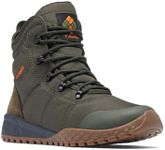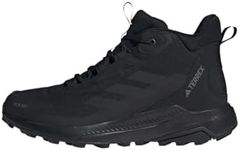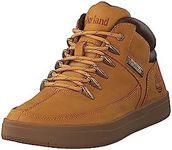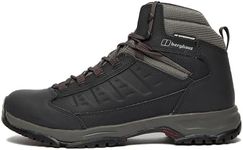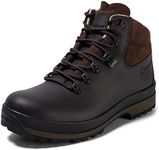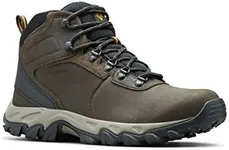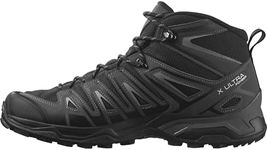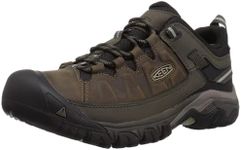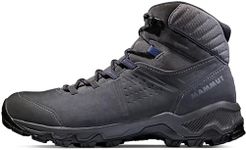Buying Guide for the Best Mens Hiking Boots
Choosing the right hiking boots is crucial for comfort and safety during your outdoor adventures. The right pair will support your feet, provide traction, and protect you from the elements. When selecting hiking boots, consider where you'll be hiking, the terrain, and the duration of your hikes. It's important to find a balance between durability, weight, and comfort to ensure you have the best experience on the trails.MaterialThe material of hiking boots affects their durability, weight, and breathability. Common materials include leather, synthetic fabrics, and a combination of both. Leather is durable and water-resistant but can be heavier, while synthetic materials are lighter and often more breathable. If you're hiking in wet conditions, consider waterproof materials. For dry, hot climates, breathable materials are preferable. Choose based on the typical weather and terrain you'll encounter.
WeightThe weight of hiking boots can impact your comfort and energy levels during hikes. Lightweight boots are ideal for shorter hikes or less challenging terrain, as they reduce fatigue. Heavier boots offer more support and protection, making them suitable for longer hikes or rough terrain. Consider the length and difficulty of your hikes to determine the appropriate weight for your boots.
Ankle SupportAnkle support is crucial for preventing injuries, especially on uneven terrain. Hiking boots come in low, mid, and high-cut styles. Low-cut boots offer less support but are lighter and more flexible, suitable for easy trails. Mid-cut boots provide moderate support and are versatile for various terrains. High-cut boots offer maximum support and protection, ideal for challenging hikes with heavy backpacks. Choose based on the terrain and your personal comfort needs.
SoleThe sole of a hiking boot affects traction and stability. Look for soles with deep lugs for better grip on slippery or uneven surfaces. Softer soles provide more grip but wear out faster, while harder soles are more durable but may offer less traction. Consider the type of terrain you'll be hiking on to select the right sole for your needs.
FitA proper fit is essential for comfort and preventing blisters. Hiking boots should fit snugly but not too tight, with enough room to wiggle your toes. Try boots on with the socks you plan to wear while hiking and walk around to test comfort. Consider the width and arch support, and remember that feet can swell during long hikes. Choose a fit that accommodates your foot shape and provides comfort over extended periods.
WaterproofingWaterproofing is important if you'll be hiking in wet conditions or crossing streams. Waterproof boots have a membrane that keeps water out while allowing moisture to escape, preventing your feet from getting wet and cold. However, they can be less breathable than non-waterproof options. If you expect wet conditions, prioritize waterproofing; otherwise, focus on breathability for dry climates.


